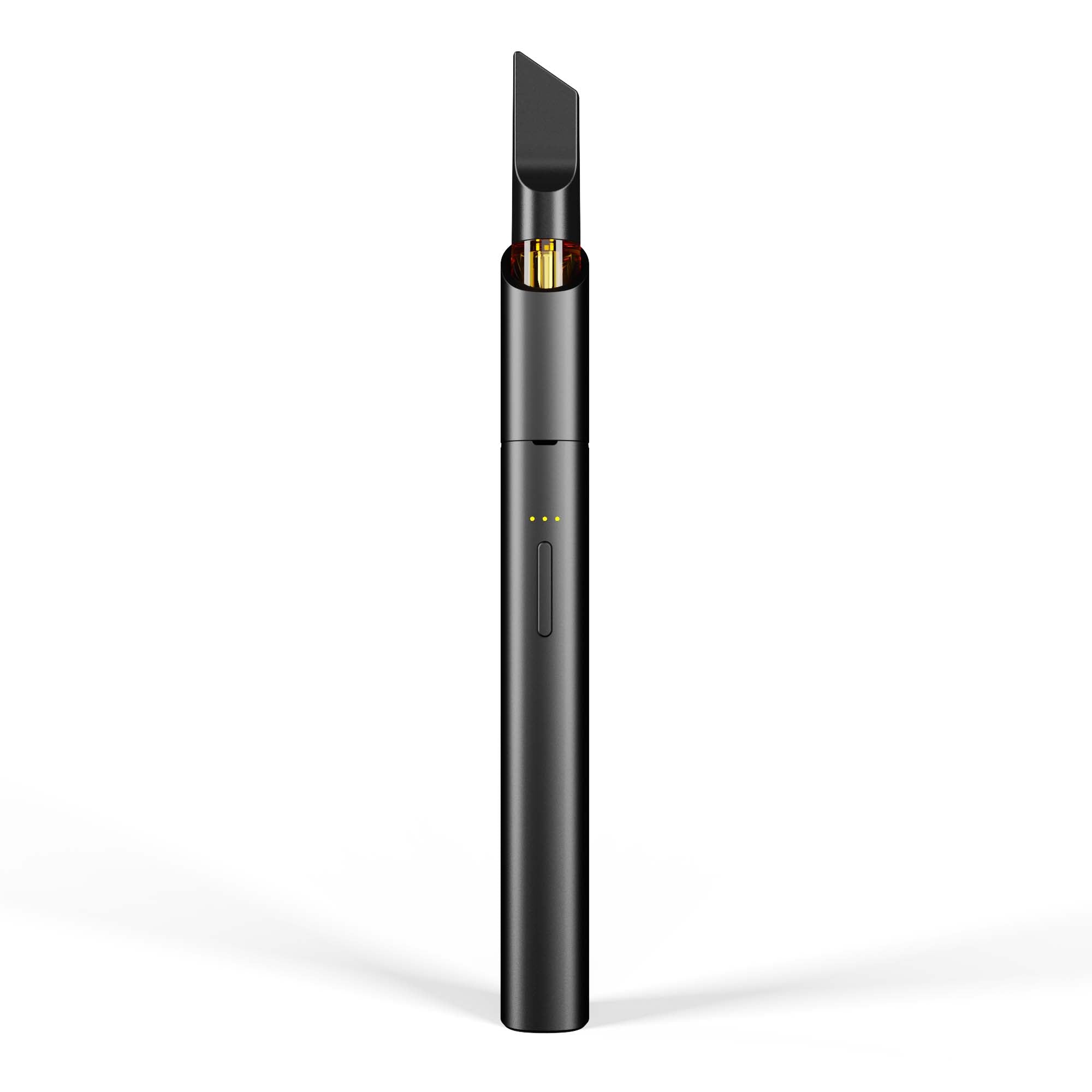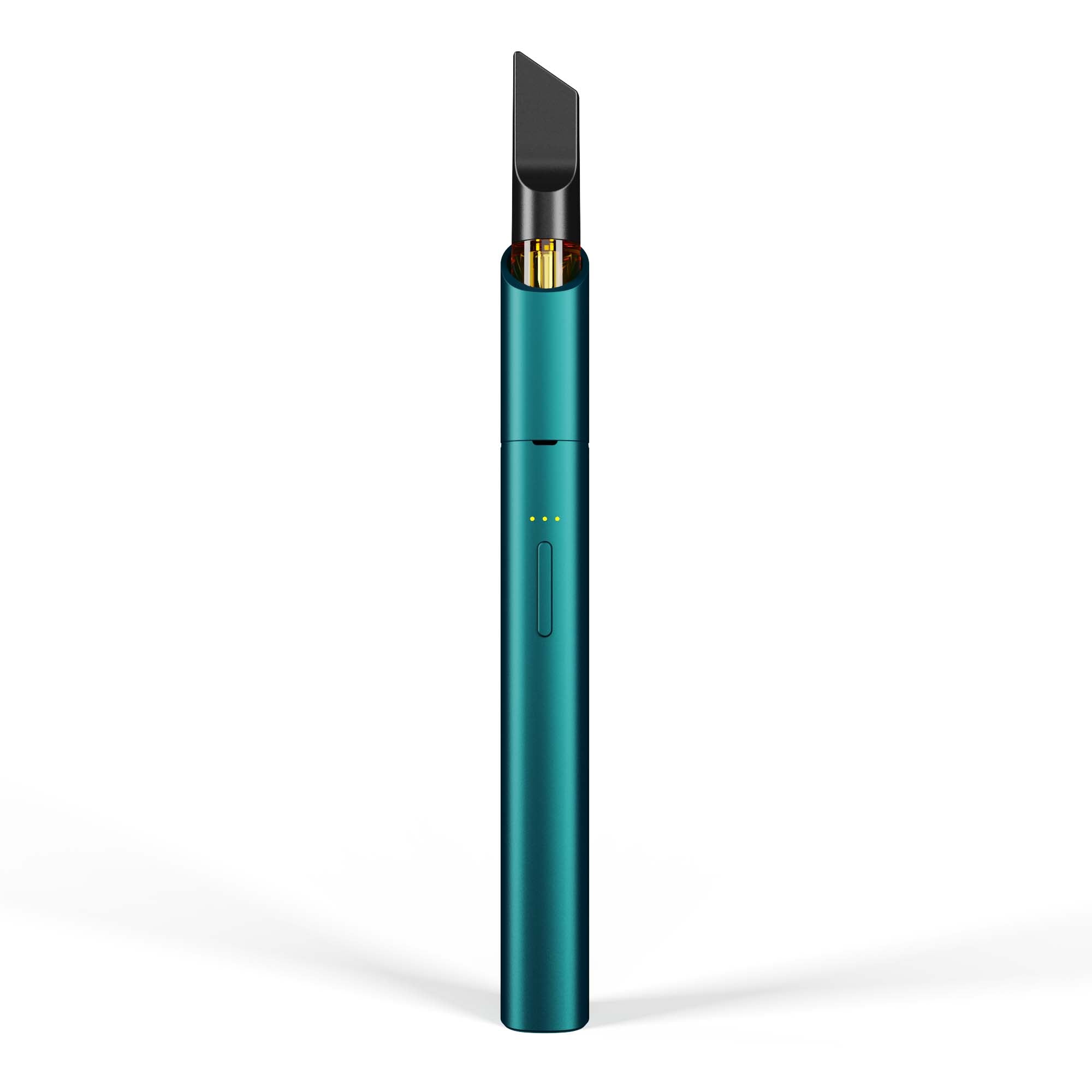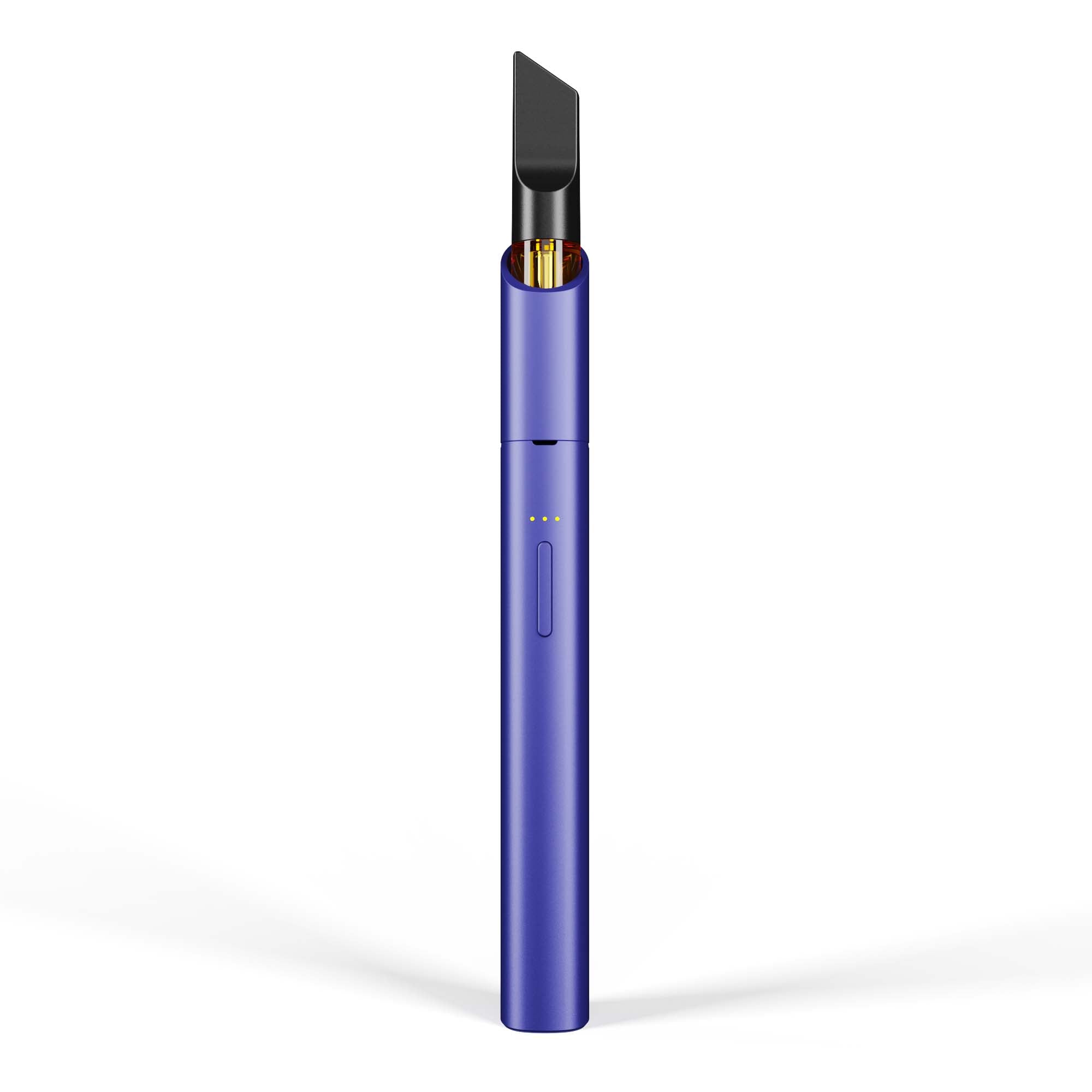Design & Aesthetics
Design and aesthetics play a crucial role in consumer perception, especially in industries like vaping where visual appeal often influences purchasing decisions. When comparing products, understanding the design choices made by manufacturers can provide insights into their target audience and the overall user experience they aim to create.
Material and Finish
The Vista Edge Vape and the original Vessel Vista both boast sleek, modern designs that prioritize functionality and a premium aesthetic. However, subtle differences in their form factors and material choices distinguish them. The Vista Edge introduces a refined contoured shape for a more comfortable grip, while the original Vista maintains a classic cylindrical silhouette. Both utilize high-quality materials like stainless steel and glass, emphasizing durability and longevity. However, the Vista Edge may offer additional finish options, such as ceramic or PVD coatings, catering to individual preferences and aesthetic desires.
Shape and Size
Shape and size can significantly impact both the functionality and the perceived value of a product. In the context of vapes, these factors influence how comfortably it fits in the hand, how discreetly it can be used, and ultimately, its overall appeal.
While both the Vista Edge Vape and the original Vessel Vista are known for their modern aesthetics and emphasis on premium materials, they diverge in their approach to shape. The original Vista’s cylindrical form is classic and familiar, offering a balanced weight distribution. The Vista Edge, however, introduces a contoured design that emphasizes comfort and ergonomics, potentially providing a more secure grip and a more personalized experience.
Color Options
Color options can significantly influence the perceived style and personality of a vaping device. While both the Vista Edge Vape and the original Vessel Vista likely offer a range of colors to suit different tastes, the Vista Edge may provide a wider selection or more unique colorways due to its emphasis on customization and individual expression.
The choice of colors can evoke certain emotions and associations, impacting how consumers connect with the product. For example, darker hues might convey sophistication or boldness, while brighter colors could suggest playfulness or energy.
Ultimately, the color options available for each vape will contribute to the overall design language and appeal, allowing users to select a device that reflects their personal style and preferences.
Heating Technology
Design and aesthetics play a crucial role in consumer perception, especially in industries like vaping where visual appeal often influences purchasing decisions.
When comparing products, understanding the design choices made by manufacturers can provide insights into their target audience and the overall user experience they aim to create.
Type of Heating Element
Heating elements are crucial components in various heating technologies. Different types of heating elements are used depending on the application and desired heating characteristics.
Some common types include:
Resistance wire:
These elements, often made of nichrome or Kanthal alloys, heat up when an electric current passes through them. They are commonly found in space heaters, ovens, and toasters.
Ceramic heating elements:
Made from ceramic materials, these elements offer high temperature resistance and efficiency. They are frequently used in hair dryers, curling irons, and electronic cigarettes.
Infrared heating elements:
These elements emit infrared radiation that directly heats objects rather than the surrounding air. They are found in industrial heaters, radiant heaters, and some drying applications.
Other types include finned elements, tubular elements, and induction heating elements, each with specific characteristics and applications.
Temperature Control
Temperature control is essential in many heating technologies to ensure safe and efficient operation.
Various methods are used to regulate temperature, including thermostats, sensors, and feedback loops.
Thermostats act as on-off switches, turning the heating element on or off based on the desired temperature setpoint.
Sensors monitor the actual temperature, providing feedback to a control system that adjusts the heating element’s power output accordingly.
Advanced systems may use PID (proportional-integral-derivative) controllers for precise temperature regulation.
Precise temperature control is crucial in applications such as industrial processes, scientific experiments, and medical equipment.
Heat-up Time
Heat-up time is a critical factor to consider when evaluating heating technologies. It refers to the amount of time it takes for a device or system to reach a desired operating temperature.
Several factors influence heat-up time, including the type of heating element used, its power rating, the material being heated, and the thermal mass of the object.
For example, devices using resistance wire heating elements tend to have longer heat-up times compared to those utilizing ceramic or infrared elements due to the way these materials convert electrical energy into heat.
A higher power rating generally results in faster heat-up times, as more energy is available to raise the temperature.
The thermal mass of the object being heated also plays a role; objects with high thermal mass require more time to reach a given temperature than those with lower thermal mass.
Understanding heat-up time is essential for various applications, such as cooking appliances, industrial processes, and medical devices, where precise and timely heating is required.
Vapor Quality
Vapor quality is a subjective experience influenced by numerous factors, including the type of device used, the heating element’s efficiency, and the user’s individual preferences. Key aspects of vapor quality include flavor production, smoothness, density, and overall satisfaction.
Flavor Production
Flavor production in vaping devices is primarily determined by the heating process and its impact on the e-liquid. The type of heating element used significantly influences flavor extraction and delivery. Resistance wire elements tend to produce a hotter vapor that can sometimes result in harshness or burnt flavors if not carefully controlled.
Ceramic heating elements, known for their rapid heat-up times and precise temperature control, are often favored for delivering better flavor profiles. They heat the e-liquid more evenly and efficiently, allowing for subtle nuances in flavor to come through.

Other factors influencing vapor quality include airflow design and the user’s inhalation technique. A well-designed airflow system can optimize vapor production and enhance flavor by providing adequate oxygen for combustion and ensuring proper distribution of heated vapor.
Cloud Density
Cloud density refers to the amount of visible vapor produced by a vaping device. Factors influencing cloud density include the power output of the device, the type of heating element used, and the composition of the e-liquid.
Devices with higher wattage settings typically produce denser clouds due to increased heat input, resulting in greater vaporization of the e-liquid. Ceramic heating elements, known for their rapid heat-up and precise temperature control, often contribute to denser clouds as they efficiently convert energy into heat.
The viscosity of the e-liquid also plays a role; thicker liquids may produce larger, denser clouds compared to thinner ones.
Smoothness
Smoothness in vapor is often perceived as a lack of harshness or irritation when inhaling. It’s influenced by factors such as the heating element’s performance, airflow design, and the e-liquid’s composition.
Ceramic heating elements are generally considered better at producing smoother vapor due to their ability to heat the e-liquid evenly and prevent overheating, which can lead to burnt or harsh flavors.
Well-designed airflow systems contribute to smoothness by ensuring that the vapor is properly cooled and diffused before reaching the user’s lungs.
The viscosity and chemical composition of the e-liquid also play a role. Some e-liquids, particularly those with higher concentrations of PG (propylene glycol), tend to produce smoother vapor than those with higher VG (vegetable glycerin) content.
Battery Life & Charging
Battery life is a crucial consideration for vapers as it directly impacts how long they can enjoy their device before needing to recharge. The Vista Edge Vape and the original Vessel Vista likely have different battery capacities, influencing their respective usage times. Understanding the battery life of each device, along with its charging time and compatibility with fast-charging technologies, is essential for vapers who prioritize portability and convenience.
Battery Capacity
Battery life in vaping devices depends on factors such as wattage used, frequency of use, and individual vaping habits.
The Vista Edge Vape and the original Vessel Vista may have different battery capacities, measured in milliampere-hours (mAh). A higher mAh rating generally indicates a longer battery life.
Charging time is another important consideration. Devices with fast-charging capabilities can be recharged more quickly, providing users with more vaping time between charges.
Understanding the battery capacity and charging characteristics of each device is essential for vapers who prioritize portability and long usage times.
Charging Speed

Battery life is a crucial factor in the vaping experience. It determines how long you can use your device before needing to recharge.
Charging speed also plays a role in convenience.
Vapor quality, including flavor production, smoothness, and cloud density, can vary depending on factors like the heating element used, airflow design, and e-liquid composition.
Portability
Both the Vista Edge Vape and the original Vessel Vista offer sleek and modern designs aimed at providing a premium user experience. However, subtle differences in their form factors and materials cater to distinct preferences. The Vista Edge’s contoured shape prioritizes ergonomic comfort and a secure grip, while the original Vista maintains a classic cylindrical silhouette known for balanced weight distribution. While both devices likely utilize high-quality stainless steel and glass, the Vista Edge may offer additional finish options like ceramic or PVD coatings, allowing users to further personalize their device.
Battery life is a critical consideration for portability. Both the Vista Edge Vape and the original Vessel Vista are likely powered by rechargeable batteries, but their capacities may differ, influencing how long each device can be used before requiring a recharge. Fast-charging capabilities could be another distinguishing feature, enabling quicker recharges for extended vaping sessions.
Vapor quality is a subjective experience influenced by various factors. The heating element employed significantly impacts flavor production and smoothness. The Vista Edge Vape and the original Vessel Vista may utilize different heating technologies, potentially leading to variations in vapor quality.
Features & Functionality
Features and functionality are crucial considerations when comparing vaping devices. Design elements, such as shape, size, and material choices, influence both aesthetics and user experience. Heating element technology plays a vital role in determining vapor quality, including flavor production, smoothness, and cloud density. Battery life and charging capabilities impact portability and convenience. Understanding these features allows users to make informed decisions based on their individual preferences and vaping habits.
App Compatibility
Features & Functionality:
- Heating Element: The type of heating element used significantly impacts vapor quality, including flavor production, smoothness, and cloud density.
- Battery Life & Charging: Battery capacity and charging speed influence portability and convenience.
- Vapor Quality: Factors like the heating element, airflow design, and e-liquid composition affect taste, smoothness, and cloud density
App Compatibility:
- While not explicitly mentioned in the provided text, app compatibility is becoming increasingly common in modern vaping devices.
- Some devices may offer smartphone apps that allow users to customize settings, track usage, and even control temperature or airflow remotely.
Conduction vs. Convection Heating
Understanding the differences between conduction and convection heating is essential when evaluating vaping devices. Both methods involve transferring heat to vaporize e-liquid, but they do so in distinct ways:
Conduction Heating: Heat is transferred directly from a hot surface to the e-liquid through contact.
- Commonly used in devices with a heating coil that sits in direct contact with the e-liquid.
- Can lead to faster heat-up times but may produce slightly harsher vapor if not carefully controlled.
Convection Heating: Heat is transferred to the e-liquid through hot air circulation.

- Often found in devices with a dedicated chamber or airflow system that circulates heated air around the e-liquid.
- Generally produces smoother vapor with better flavor preservation due to more even heating.
Discreetness
The Vista Edge Vape and the original Vessel Vista likely utilize different heating technologies, potentially influencing the overall vapor quality.
Conduction and convection heating are common methods used in vaping devices. Understanding their distinctions can help users determine which type of device might best suit their preferences.
Vapor Quality Considerations:
While both the Vista Edge Vape and the original Vessel Vista likely prioritize a premium user experience, subtle differences in design and functionality can cater to different vaping styles and preferences.
Price and Value**
When comparing the Vista Edge Vape to the original Vessel Vista, several key aspects contribute to their perceived value.
- Design & Aesthetics: Both vapes boast modern designs, but the Vista Edge’s contoured shape emphasizes comfort and ergonomics. The original Vista maintains a classic cylindrical silhouette for balanced weight distribution. Finish options, like ceramic or PVD coatings on the Vista Edge, add to perceived value by offering customization.
- Heating Element Technology: This directly impacts vapor quality. While specifics are unclear, different heating elements (resistance wire, ceramic, etc.) lead to variations in flavor production, smoothness, and cloud density. A superior heating element could justify a higher price point for the Vista Edge.
- Battery Life & Charging: Longer battery life and fast-charging capabilities add convenience and value, especially for frequent vapers. If the Vista Edge offers these advantages over the original Vessel Vista, it could be perceived as more valuable.
- Additional Features: App compatibility, temperature control customization, or unique airflow systems can enhance user experience and contribute to perceived value.
Ultimately, the “best” value depends on individual priorities. A vaper prioritizing ergonomics might favor the Vista Edge, while someone seeking a classic design might prefer the original Vessel Vista. Understanding how each device’s features align with personal preferences is crucial for making a value-driven decision.
Overall Comparison
Design and aesthetics play a crucial role in consumer perception, especially in industries like vaping where visual appeal often influences purchasing decisions.
When comparing products, understanding the design choices made by manufacturers can provide insights into their target audience and the overall user experience they aim to create.
Both the Vista Edge Vape and the original Vessel Vista boast sleek, modern designs that prioritize functionality and a premium aesthetic. However, subtle differences in their form factors and material choices distinguish them. The Vista Edge introduces a refined contoured shape for a more comfortable grip, while the original Vista maintains a classic cylindrical silhouette. Both utilize high-quality materials like stainless steel and glass, emphasizing durability and longevity. However, the Vista Edge may offer additional finish options, such as ceramic or PVD coatings, catering to individual preferences and aesthetic desires.
Shape and size can significantly impact both the functionality and the perceived value of a product. In the context of vapes, these factors influence how comfortably it fits in the hand, how discreetly it can be used, and ultimately, its overall appeal.
While both the Vista Edge Vape and the original Vessel Vista are known for their modern aesthetics and emphasis on premium materials, they diverge in their approach to shape. The original Vista’s cylindrical form is classic and familiar, offering a balanced weight distribution. The Vista Edge, however, introduces a contoured design that emphasizes comfort and ergonomics, potentially providing a more secure grip and a more personalized experience.
Color options can significantly influence the perceived style and personality of a vaping device. While both the Vista Edge Vape and the original Vessel Vista likely offer a range of colors to suit different tastes, the Vista Edge may provide a wider selection or more unique colorways due to its emphasis on customization and individual expression.
The choice of colors can evoke certain emotions and associations, impacting how consumers connect with the product. For example, darker hues might convey sophistication or boldness, while brighter colors could suggest playfulness or energy. Ultimately, the color options available for each vape will contribute to the overall design language and appeal, allowing users to select a device that reflects their personal style and preferences.
Design and aesthetics play a crucial role in consumer perception, especially in industries like vaping where visual appeal often influences purchasing decisions.
When comparing products, understanding the design choices made by manufacturers can provide insights into their target audience and the overall user experience they aim to create.
Heating elements are crucial components in various heating technologies. Different types of heating elements are used depending on the application and desired heating characteristics.
Some common types include:
Resistance wire:
These elements, often made of nichrome or Kanthal alloys, heat up when an electric current passes through them. They are commonly found in space heaters, ovens, and toasters.
Ceramic heating elements:
Made from ceramic materials, these elements offer high temperature resistance and efficiency. They are frequently used in hair dryers, curling irons, and electronic cigarettes.
Infrared heating elements:
These elements emit infrared radiation that directly heats objects rather than the surrounding air. They are found in industrial heaters, radiant heaters, and some drying applications.
Other types include finned elements, tubular elements, and induction heating elements, each with specific characteristics and applications.
Temperature control is essential in many heating technologies to ensure safe and efficient operation.
Various methods are used to regulate temperature, including thermostats, sensors, and feedback loops.
Thermostats act as on-off switches, turning the heating element on or off based on the desired temperature setpoint.
Sensors monitor the actual temperature, providing feedback to a control system that adjusts the heating element’s power output accordingly.
Advanced systems may use PID (proportional-integral-derivative) controllers for precise temperature regulation.
Precise temperature control is crucial in applications such as industrial processes, scientific experiments, and medical equipment.
Heat-up time is a critical factor to consider when evaluating heating technologies. It refers to the amount of time it takes for a device or system to reach a desired operating temperature.
Several factors influence heat-up time, including the type of heating element used, its power rating, the material being heated, and the thermal mass of the object.
For example, devices using resistance wire heating elements tend to have longer heat-up times compared to those utilizing ceramic or infrared elements due to the way these materials convert electrical energy into heat.
A higher power rating generally results in faster heat-up times, as more energy is available to raise the temperature.
The thermal mass of the object being heated also plays a role; objects with high thermal mass require more time to reach a given temperature than those with lower thermal mass.
Understanding heat-up time is essential for various applications, such as cooking appliances, industrial processes, and medical devices, where precise and timely heating is required.
Vapor quality is a subjective experience influenced by numerous factors, including the type of device used, the heating element’s efficiency, and the user’s individual preferences. Key aspects of vapor quality include flavor production, smoothness, density, and overall satisfaction.
Flavor production in vaping devices is primarily determined by the heating process and its impact on the e-liquid. The type of heating element used significantly influences flavor extraction and delivery.
Resistance wire elements tend to produce a hotter vapor that can sometimes result in harshness or burnt flavors if not carefully controlled.
Ceramic heating elements, known for their rapid heat-up times and precise temperature control, are often favored for delivering better flavor profiles. They heat the e-liquid more evenly and efficiently, allowing for subtle nuances in flavor to come through.
Other factors influencing vapor quality include airflow design and the user’s inhalation technique. A well-designed airflow system can optimize vapor production and enhance flavor by providing adequate oxygen for combustion and ensuring proper distribution of heated vapor.
Cloud density refers to the amount of visible vapor produced by a vaping device. Factors influencing cloud density include the power output of the device, the type of heating element used, and the composition of the e-liquid.
Devices with higher wattage settings typically produce denser clouds due to increased heat input, resulting in greater vaporization of the e-liquid.
Ceramic heating elements, known for their rapid heat-up and precise temperature control, often contribute to denser clouds as they efficiently convert energy into heat.
The viscosity of the e-liquid also plays a role; thicker liquids may produce larger, denser clouds compared to thinner ones.
Smoothness in vapor is often perceived as a lack of harshness or irritation when inhaling. It’s influenced by factors such as the heating element’s performance, airflow design, and the e-liquid’s composition.
Ceramic heating elements are generally considered better at producing smoother vapor due to their ability to heat the e-liquid evenly and prevent overheating, which can lead to burnt or harsh flavors.
Well-designed airflow systems contribute to smoothness by ensuring that the vapor is properly cooled and diffused before reaching the user’s lungs.
The viscosity and chemical composition of the e-liquid also play a role. Some e-liquids, particularly those with higher concentrations of PG (propylene glycol), tend to produce smoother vapor than those with higher VG (vegetable glycerin) content.
Vista Edge Series – A Smart Investment
- Under Eye Botox In Woodmansterne, Surrey - November 17, 2025
- Why Breadcrumbing Is An Emotionally Unhealthy Dating Habit - November 3, 2025
- What Is The Alternative To Tear Trough Fillers? - October 31, 2025
